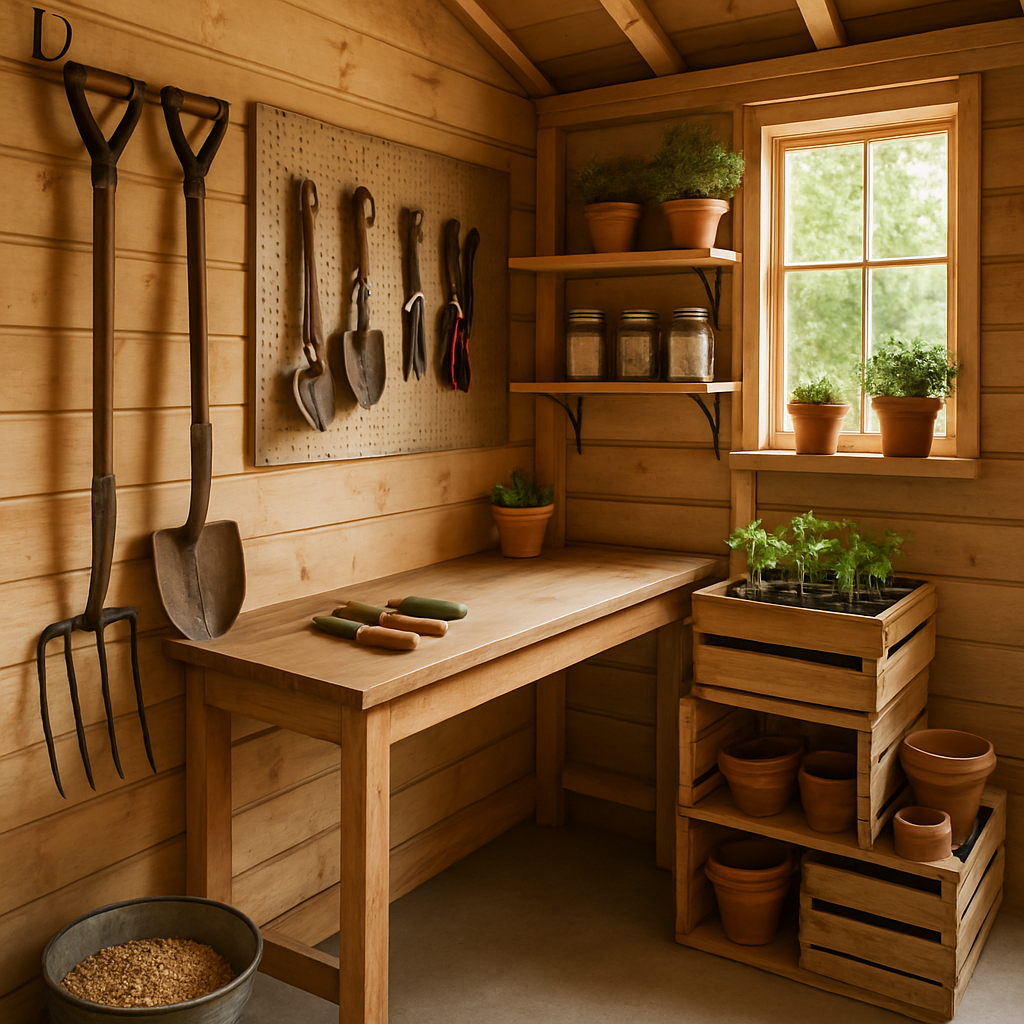Simple Storage Hacks for South East Queensland Gardeners
1. Introduction
Gardening in South East Queensland is a delight, but storing garden yield, supplies, and tools can turn perplexing. Heat, humidity, biologic marauders (like pests and mould), and fluctuating weather demand more than just stacking things away. Clever storage isn’t just about tidiness—it’s about preserving value, extending usefulness, and keeping your garden’s heart intact.
2. Organising Tools and Equipment
-
Shed setup and vertical storage
Building or adapting a garden shed with verticality in mind can save vast floor space. Hang long‑handled tools (rakes, hoes, shovels) on wall hooks. Use pegboards for hand tools: secateurs, trowels, gloves. Shelves fitted above workbenches help keep daily tools at arm’s reach. -
Rust prevention and tool care
Moisture in SEQ is relentless. After using tools, remove soil and dry them thoroughly. A thin coat of oil on metal parts helps. Wooden handles can be rubbed with linseed oil to prevent cracking or mold. Store tools off the ground to avoid moisture seepage from soil or concrete.
3. Storing Produce from the Garden
-
Short‑term vs long‑term produce storage
Some fruits and veg need eating within days. Others can last for weeks or months with proper care. Identify what you’ll consume soon and what you want to store: leafy greens are short‑term; root crops and hardy fruit may persist longer. -
Using cool, shaded spots and passive cooling
SEQ has hot summers. Use shaded pantries or garages for produce that doesn’t require refrigeration. Passive cooling options like ventilated baskets, ceramic pots, or storing in cool corners of unused rooms can help. Ensure airflow, avoid direct sun, and protect from heat sources.
4. Seed, Bulb and Tubers Storage
-
Drying, cleaning and labelling
Before storing seeds, bulbs or tubers, ensure they are thoroughly dry. Remove dirt, allow air‑drying in shade. Label containers with plant variety, collection date, and any other important note. A lot of seed viability is lost when mixed or unlabelled. -
Ideal moisture and temperature levels
Seeds and tubers fare best in cool (ideally under 15‑18 °C), dry conditions. Moisture can rot them or provoke fungal growth. Use airtight containers or sealed jars with silica gel or dry rice/wood chips. Avoid humidity spikes, such as during rain or storms.
5. DIY Storage Solutions from Everyday Items
-
Repurposed crates, pallets, jars etc.
Wooden crates from markets, fruit boxes, old wine crates—they can house pots, seedlings, tools. Pallets turned upright become vertical racks for tools or planters. Mason jars with tight lids store seeds, dried herbs, labels in jars ensure you see contents at a glance. -
Using vertical space, under‑bench and wall storage
Walls and undersides are often neglected. Install shelves high up for infrequent items. Under potting benches is perfect for soil bags, pots, fertilisers. Hooks under benches or shelves to hang gloves, shears, twine. This keeps work surfaces clean and everything visible.
6. Moisture and Pest Control Hacks
-
Natural repellents, sealed containers, silica gel etc.
Moisture control is paramount. Use silica gel packets or dry rice in seed and bulb storage containers. Cedar shavings or eucalyptus oil can deter many insects. For herbs or harvested produce, wrap in breathable paper before sealing in containers. -
Keeping rodents, insects and mould at bay
Ensure storage areas don’t have cracks or door gaps. Elevate containers off the floor. Use mesh or fine wire over vents to block pests but allow airflow. Clean storage spaces regularly to remove plant debris which attracts bugs. Sun‑dry or heat‑treat containers occasionally to sterilize.
7. Smart Seasonal Rotation and Usage
-
First in, first out system for your harvests and seeds
What you store first should be used first. Label entries. Place newer items behind older ones. This avoids waste from forgotten batches going bad. Rotate your seed stores similarly: older seeds get tested or used earlier. -
Planning storage around seasonal peaks
SEQ gardens often boom mid‑season with surpluses. Anticipate these peaks: prepare containers, cool spaces, extra drying racks or cupboard space ahead of time. During harvest surges, schedule batches for storage or preservation to avoid spoilage.
8. Budget‑Friendly Materials & Sustainability
-
Upcycling, thrift finds, low‑cost fixes
Many storage hacks cost almost nothing: old buckets become holders for stakes, pallets become shelves, second‑hand shelves or cabinets repurposed. Always ask neighbours, thrift shops, or reuse centres for potential good finds. -
Eco‑friendly materials and local sourcing
Use rot‑resistant woods, reclaimed metal or materials that can endure SEQ’s damp and heat. Avoid plastics that degrade under sun. If buying new, look for recycled or sustainably sourced materials. Local supply often means less transport and lower carbon footprint.
9. Conclusion
Simple storage hacks—organising tools, caring for produce, smart drying and sealing, pest prevention—make a profound difference in a gardener’s daily rhythm and harvest outcome. South East Queensland offers abundant bounty, but only with thoughtful storage are both beauty and yield preserved. Adapt, experiment, and let your garden’s storage solutions become just as flourishing as its blooms.




